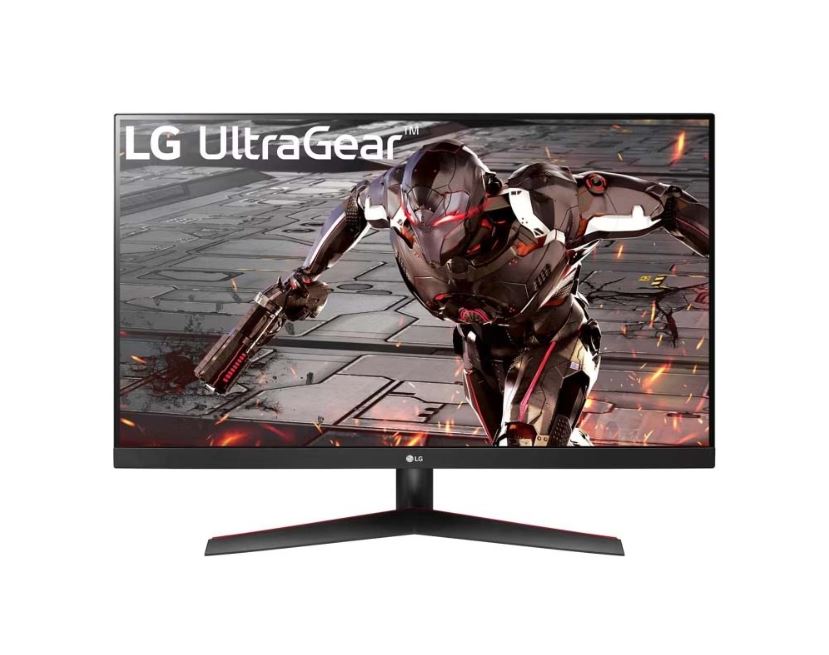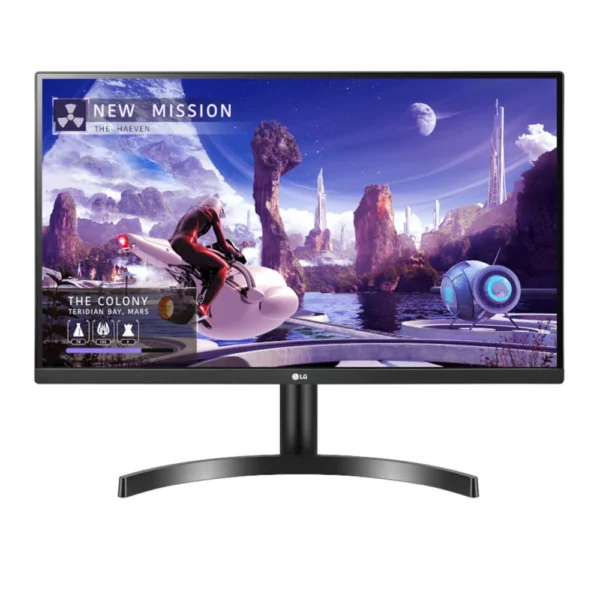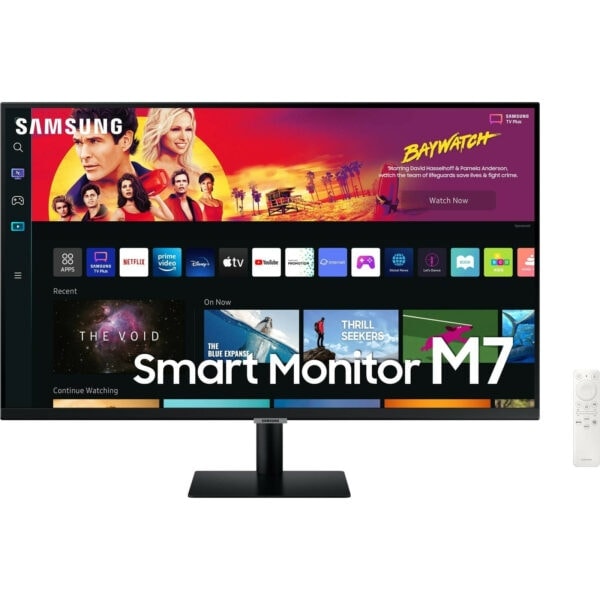The IPS (In-Plane Switching) monitor offers remarkable color accuracy and wide viewing angles, making it an indispensable tool for graphic designers and photographers alike.
At the core of an IPS monitor lies an alignment of liquid crystal. These crystals, arranged parallel to the panel’s surface, facilitate the passage of light, thereby delivering unmatched color accuracy.
Despite the brilliance of this invention, it does have certain drawbacks. These include a slower response time compared to TN panels and the notorious ‘IPS glow’ phenomenon.
Despite these disadvantages, the professional world predominantly opts for the IPS display for activities demanding flawless color precision, especially within the graphics and creative departments. When placed in the right environment, an IPS monitor can significantly enhance your viewing experience.
Understanding IPS Monitors
Leading to its widespread use in everything from display monitors to touch-screen devices, the IPS display technology has quickly become the preferred choice for tech manufacturers and consumers alike.
The main types of display technologies, which include Twisted Nematic (TN), Vertical Alignment (VA), and In-Plane Switching (IPS), each have their advantages and disadvantages. However, the benefits of an IPS monitor often outshine the others.
IPS technology offers great image quality due to its superior color accuracy and consistency. The key to this success lies in the way it arranges and manipulates the liquid crystals between two glass surfaces to produce an image.
In an IPS display, the liquid crystals are oriented parallel to the surfaces when no voltage is applied, allowing light to pass freely. However, when voltage is applied, they align perpendicular to the surfaces, blocking light and creating an on-screen image.
Moreover, IPS monitors offer wide viewing angles. Unlike TN or VA, the superiority of an IPS panel monitor is unmatched when it comes to color precision and wide-viewing capacity.
The Anatomy of IPS Display Technology
The world of display technologies has been revolutionized by In-Plane Switching (IPS) technology, known for its vibrant displays and accurate color reproduction. For these reasons, the IPS monitor makes an excellent choice for creative tasks such as graphic design where color accuracy and vibrancy are crucial.
The IPS panel, a feat of modern engineering, utilizes liquid crystals to deliver stunning visuals on your display screen. These minuscule crystals, positioned between two glass surfaces, play an essential role in light manipulation to create the image visible on your display.
The process begins when a specific voltage is applied to these molecules. As a result, their alignment shifts from parallel to the surfaces to perpendicular. This blocks the passage of light, creating the intended on-screen image. This fundamental process is common to all types of LCDs, including IPS and TN.
Key Points about In-Plane Switching (IPS) Technology
- IPS technology is highly appreciated for its vibrant displays and accurate color reproduction, making it an excellent choice for tasks requiring color accuracy like graphic design.
- IPS display technology operates through a unique arrangement of liquid crystals, positioned between two glass surfaces, which play a crucial role in light manipulation to create the image visible on the display.
- The process of image creation begins when a specific voltage is applied to these molecules, causing their alignment to shift and blocking the passage of light, thus creating the intended on-screen image.
- – This fundamental process of IPS technology is common to all types of LCDs, including IPS and TN.
Disadvantages of an IPS Monitor
IPS panels provide excellent color accuracy, wide viewing angles, and consistency, making them ideal for professionals in creative fields. However, IPS Monitors can lack in terms of response time and refresh rate. This means they might not be the best choice for gamers who prioritize faster response times and high refresh rates over accurate color representation.
Another potential downside is that IPS display panels are generally more expensive than TN panels or VA panels. Therefore, while they offer superior image quality, they may not be a cost-effective choice for everyone.
Advantages of an IPS Monitor
One significant advantage of IPS monitors is their consistent color accuracy. This is thanks to the in-plane switching technology, which allows liquid crystals to align parallel to the two glass surfaces of the screen, producing an image. The alignment also allows light to pass through, resulting in a wide range of colors. This feature makes it a preferred option for photographers, graphic designers, and other creative industries.
Another advantage of the IPS screen is the wide viewing angles. Unlike TN panels, the colors and images on an IPS monitor remain consistent even when viewed from different angles. That means you do not have to be directly in front of the screen to enjoy the full gamut of colors. This is beneficial for collaborative work environments where multiple people may need to view an IPS display technology screen simultaneously from different perspectives.
Advantages of IPS Monitors | Details
Color Accuracy and Consistency | IPS technology allows liquid crystals to align parallel to the two glass surfaces of the screen, producing an image with a wide range of colors.
Wide Viewing Angles | Unlike TN panels, the colors and images on an IPS monitor remain consistent even when viewed from different angles.
How Does an IPS Monitor Compare to TN and LCD?



In the ever-evolving digital world, we can expect to encounter new technologies that offer different user experiences. Such as the IPS display with its superior viewing angle and color precision, the TN technology with faster response time, or the vertical alignment panels, a subtype of LCD that provide richer contrast.
Moreover, innovative technologies like OLED displays, backed by giants like LG and Hitachi, also offer superior color accuracy and image quality. Their major downside is their short lifespan, particularly when displaying static images over a long period.
Choosing the right monitor essentially boils down to the user’s primary needs. For graphic artists and creative professionals who value color accuracy and consistency, an IPS display might be the perfect choice. On the other hand, gamers who prioritize fast response times might be better off with TN panels. OLED Displays and VA panels could serve as a middle ground for individuals seeking a blend of both worlds.
Display Technology | Color Accuracy | Response Time | Viewing Angle
IPS Display | High | Fast | Superior
TN Panels | Lower than IPS and VA | Fastest | Less than IPS and VA
VA Panels | Better than TN | Slower than TN | Better than TN
OLED Displays | Superior | Varies | Excellent
What Makes IPS Panel Monitors Unique



Some of the main attractions of IPS (In-Plane Switching) technology are its wide viewing angles, superior color accuracy, and exceptional color reproduction compared to other LCD panels. IPS displays maintain their color consistency and clarity even when viewed from the sides, allowing an immersive experience no matter your vantage point. On the other hand, TN panels often suffer from color shifting and reduced clarity when viewed from an angle.
IPS panel monitors are not limited to just superior color accuracy and wide viewing angles. either. They are also known for their great image stability and less tailing when touched, making them ideal for touch-screen devices.
All these factors combined make an IPS display an all-rounder, suitable for both gaming enthusiasts seeking high-definition visuals and creative professionals demanding color precision.
However, the beauty of IPS technology is not without compromise. It usually has slower response times, which may not be the best choice for gamers who prioritize fast-paced gameplay.
Response Time and Refresh Rate: How They Affect Your IPS Monitor
A slow response time may lead to an effect known as ‘ghosting’ wherein fast-moving objects on a gaming monitor or IPS panel monitor may leave a trail or blur. This indicates a lag in the update of pixels on display panels. In this context, getting a balance between the two parameters is crucial.
Effects of Slow Response and Refresh Rate | Details
Ghosting | A too-short response time may lead to an effect known as ‘ghosting’ wherein fast-moving objects on a gaming monitor or IPS panel monitor may leave a trail or blur, indicating a lag in the update of pixels on display panels.
Gaming on an IPS Monitor: What You Need to Know
When selecting a new monitor, it’s vital to comprehend the strengths of different panel types.
VA (Vertical Alignment) panels, for example, present a compromise between response times and color reproduction, bridging the gap between TN and IPS panels.
With TN panels, you can expect much faster response times and refresh rates. This effect boosts the device’s response, making it more attractive to hardcore gamers. The refresh rate of a monitor is a significant factor in gaming performance, especially when gamers are looking to upgrade to a new LG FHD IPS display, which offers benefits such as better color reproduction and viewing angles compared to other monitor panel types.
Lastly, despite its limits, the IPS monitor can still be beneficial for gamers. For instance, they can enjoy more accurate color reproduction and wider viewing angles. This difference enhances the gaming experience overall.
Discover the Color Accuracy of IPS Displays
One may naturally question the relevance of IPS LCDs, especially when considering their disadvantage in contrast ratio compared to newer panel technologies like OLED displays. Despite the development of more sophisticated display technologies, IPS panels continue to hold their ground due to their consistency in terms of color accuracy across varying viewing angles.
It is essential to note that while they are versatile, IPS displays may not be suitable for every use. For instance, they may not be the first preference for hardcore gamers who prioritize faster response times and refresh rates over color accuracy. These panels are also not ideal for touch-screen devices as they exhibit ‘tailing’ when touched.
On the flip side, IPS-type displays shine where color accuracy and consistency are paramount.
They are the go-to choice for professionals in creative fields such as graphic design, photography, and video editing. Thus, the choice for the type of LCD panel boils down to the specific needs and preferences of the user
IPS LCDs
- Despite newer technologies, IPS panels remain popular due to their consistent color accuracy across different viewing angles.
- IPS displays may not be the first choice for gamers who prioritize response times and refresh rates over color accuracy.
- IPS panels are not ideal for touch-screen devices due to a ‘tailing’ effect when touched.
- IPS-type displays are preferred in professional fields like graphic design, photography, and video editing where color accuracy and consistency are crucial.
Viewing Angles and Color Accuracy: Major Advantages of IPS Monitors
Many find the superior image quality and viewing angles of an IPS display worth any drawbacks the monitor may have. Its superior color accuracy is also another advantage that is hard to pass up. By allowing light to pass through two parallel electrode layers, it ensures unrivaled color fidelity. Graphic designers, photo editors, and other creative professionals often prefer IPS monitors for this reason. Moreover, the backlight system in these monitors also provides a more uniform light distribution, further enhancing the image quality.
IPS monitors are generally more expensive than their TN or VA counterparts, but for good reason. Compared to other monitors, the IPS has significantly better build quality and more advanced features.
Deciphering the Differences: IPS vs Other Display Technologies



While the creative industry prefers an IPS screen with its wide viewing angles and color accuracy, gamers often lean towards the twisted nematic (TN) panel type of LCD, as it boasts faster response times and higher refresh rates. These two factors are what provide a significantly optimized gaming experience. The VA (Vertical Alignment) also holds its ground with a high contrast ratio, nestling in between IPS and TN displays, offering a balanced performance.
In the world of LCD technology, the In-Plane Switching (IPS) and Twisted Nematic (TN) panel types dominate the scene. IPS display technology, invented by Hitachi and later perfected by Japan Display Inc. and LG, utilizes liquid crystal molecules arranged parallel to the panel’s surfaces to produce an image with excellent color accuracy. It’s a perfect choice for those prioritizing color reproduction and wide viewing angles.
On the other hand, TN panels, with their pixel response time as quick as 1 ms, are a favorite among gamers who crave speed, even though they may not offer the best color accuracy like an IPS display.
Panel Type | Key Features | Best Use
IPS (In-Plane Switching) | Excellent color accuracy, Wide viewing angles | Color reproduction and wide angle viewing
TN (Twisted Nematic) | Fast response times, High refresh rates | Gaming
VA (Vertical Alignment) | High contrast ratio, Balanced performance | General use, including gaming and color-sensitive work
The Drawbacks of Using an IPS Display
While the wide viewing angles and vibrant colors offered by IPS display technology are highly prized by gamers and creative professionals, they are not always necessary for everyday computing tasks. For users who mostly use their computers for activities like web browsing, document editing, or watching movies, a less expensive TN or VA panel could be equally effective.
IPS screens are also known to manifest tailing when touched, which isn’t ideal for touch-screen devices. They also face criticism for their slower response times when compared to other panel types like TN.
This raises concerns for gamers who value faster response times for a smoother gaming experience. Despite the disadvantages, IPS panels are praised for their wide viewing angles, superior color accuracy and consistency, and their use of TFT LCDs in liquid crystal display screen technology.
Making the Switch: Choosing an IPS Monitor Over Other Types
The process of producing an image on a display should not only consider color and viewing angles, but also factors like response time, refresh rate, and contrast ratio to ensure great image quality. Whether you’re looking to indulge in gaming or pursue creative tasks, the advantages of IPS display technology are undeniable.
TFT LCDs, for instance, are the dominant type of display in modern computers and have a voltage applied to them to control the alignment of the liquid crystal molecules. These then determine how much light passes through, producing the on-screen images.
IPS monitors, on the other hand, offer stable and consistent color accuracy, which means the images remain consistent even at wide viewing angles.
Key Advantages of IPS Display Technology
- IPS monitors provide stable and consistent color accuracy, ensuring images remain consistent even at wide viewing angles.
- IPS displays are produced by leading companies like Japan Display Inc and AU Optronics, known for their superior image quality.
- IPS technology surpasses the performance of TFT LCDs, the dominant type of display in modern computers, by controlling the alignment of liquid crystal molecules more effectively.








